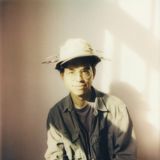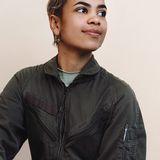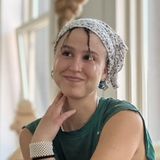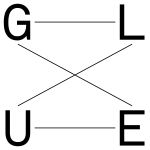Change is the word of this time: change in politics, change in behaviour, change in how we look at the world. But what is needed to change a system? Where do we start? And who starts? Alternatives from the Unexpected is the name of this talk, but also the name of the exhibition of designers that were curated to take part in GLUE 2025. Change may come from the wingbeat of a butterfly, or from designers who challenge the expected. Around the table, we have four designers with unexpected ideas: Guarav Jhangiani, Herma de Wit-Orobio de Castro, Jerrold Saija and Michele Boulogne.
Doors open at 19:15
You can attend this event physically or online. When making your reservation, choose between a physical spot or an online reservation.
Together with

Herma de Wit-Orobio de Castro
Artist

Jerrold Saija
Visual artist

Michele Boulogne
Artist & textile designer

Maria Murphy
Artist
About the artists
Herma de Wit-Orobio de Castro
Herma de Wit-Orobio de Castro’s artistic works encompass bronze sculptures, objects, drawings, etchings and monotypes, which serve as striking reflections of her profound connection with nature. She gets inspiration during her many travels around the world from which she always takes flora back home. Within the isolated fragments of flora she explores the delicate balance between fragility and strength present in the natural world. In her recent creations, this exploration takes a more abstract form, with rhythm playing a significant role. The isolated fragments undergo a graphical abstraction, transforming into subdued forms that transcend ordinary perception.
Michèle Boulogne
Michèle Boulogne (she/her) is a Martinican artist and textile designer exploring the cultural and social contexts behind space exploration and remote geographies through visual arts and textile experimentation. Grounded in historical research, her work questions traditional representations of the environment, including maps, remote sensing imagery and historical texts, examining how these tools shape collective imagination and identity over time. Her practice focuses on places perceived as distant or alien, where storytelling and modes of communication are central to their construction and future.
Jerrold Saija
Jerrold Saija (Sittard, 1996) engages with the ways memories take shape and fade. What first seemed lost and intangible resides in our bodies, archives, intimate connections, oral traditions, and mythological stories. Through his practice he draws from these networks to capture memories, ensuring they are not lost but can be re-experienced, preserved, and passed on. Shared moments become temporary portals for memories.
Language runs like a rhythm through his work, both in writing and poetry, and serves as a vital source for forging new connections and discovering alternative stories. His work touches on themes of transformation and reinterpretation, where the past is not fixed, but constantly in motion—an ongoing dialogue between memory and the body.
Using photography, sculpture, 3D modeling, video assemblage, and spatial installations, he weaves together fragments of the past and present. Giving them new meaning—a way to reconnect with what is yet to be seen and felt.
MARUXI
Maria Murphy
My name is Maru/Maruxi/Maria Murphy. Having spent the previous 4 years in Eindhoven has shaped me as a maker allowing me to dance between the boundary of art and design as I’ve always considered myself to be an artist inside a design school. I love working intuitively and working big. I enjoy to experiment with the ways we can live in art, diving into a world where objects seem to become alive, creating a clear trajectory for interaction. I like to use my art as a conversation starter, as something approachable for people to fully engage with it.
My name is Maru/Maruxi/Maria Murphy. Having spent the previous 4 years in Eindhoven has shaped me as a maker allowing me to dance between the boundary of art and design as I’ve always considered myself to be an artist inside a design school. I love working intuitively and working big. I enjoy to experiment with the ways we can live in art, diving into a world where objects seem to become alive, creating a clear trajectory for interaction. I like to use my art as a conversation starter, as something approachable for people to fully engage with it.




